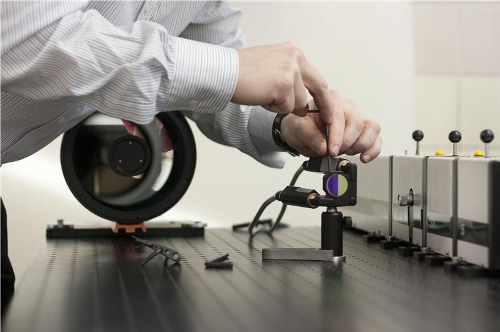A new chemical detection method has currently been established at the Vienna University of Technology. Using the new technique, chemicals within a container over a distance exceeding 100 m can be detected.
 Raman Spectroscope at Vienna University of Technology
Raman Spectroscope at Vienna University of Technology
By employing the specific scattering ability of laser light, the contents within a nontransparent, closed container can be identified.
A Professor at TU Vienna, Bernhard Lendl said that this new detection method is called Raman-spectroscopy. The sample is irradiated with a laser beam. Energy transformation can be observed by irradiating the sample with laser beam. Furthermore, the transfer of energy in the molecules by photons shows color variation. The scattered light serves as a chemical fingerprint, Scientists can determine the scattered molecules by analyzing the color spectrum.
According to Bernard Zachhuber, technological advancements enable long distance measurements with Raman-spectroscopy. Raman-scattering process in the sample is stimulated by few photons, flowed by uniform scattering of light. Sensitive light detectors and advanced telescopes are used to detect the deflected light.
In a nontransparent container, detection of samples over long distances is facilitated by Raman spectroscopy, in which the container wall emits a laser beam and a portion of the beam enters the box, stimulating Raman-scattering processes. The significant light signal can be detected by a detector telescope placed over a distance from the laser convergence.
This new detector method serves a wide range of applications, including examining icebergs in geological analysis on a Mars mission, investigations in complex environments, security checks at the airport, and various other chemical industrial applications.
With grants from the EU, the TU Vienna researchers collaborated with private companies and public safety partners. Testing was carried out with explosives such as RDX, TNT, and ANFO.